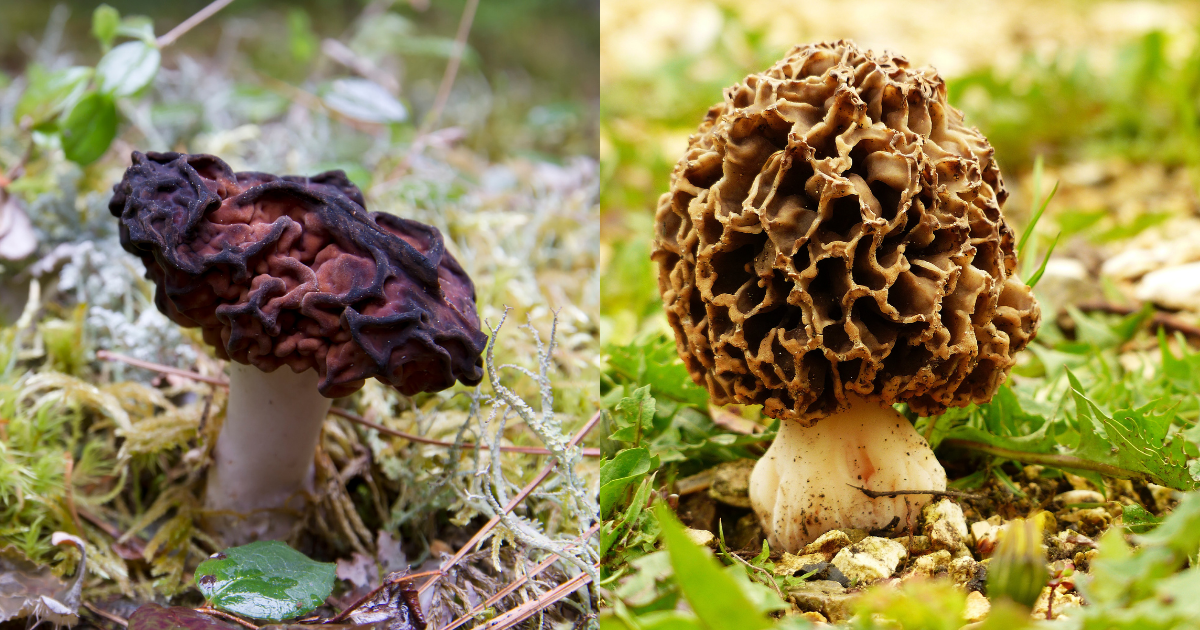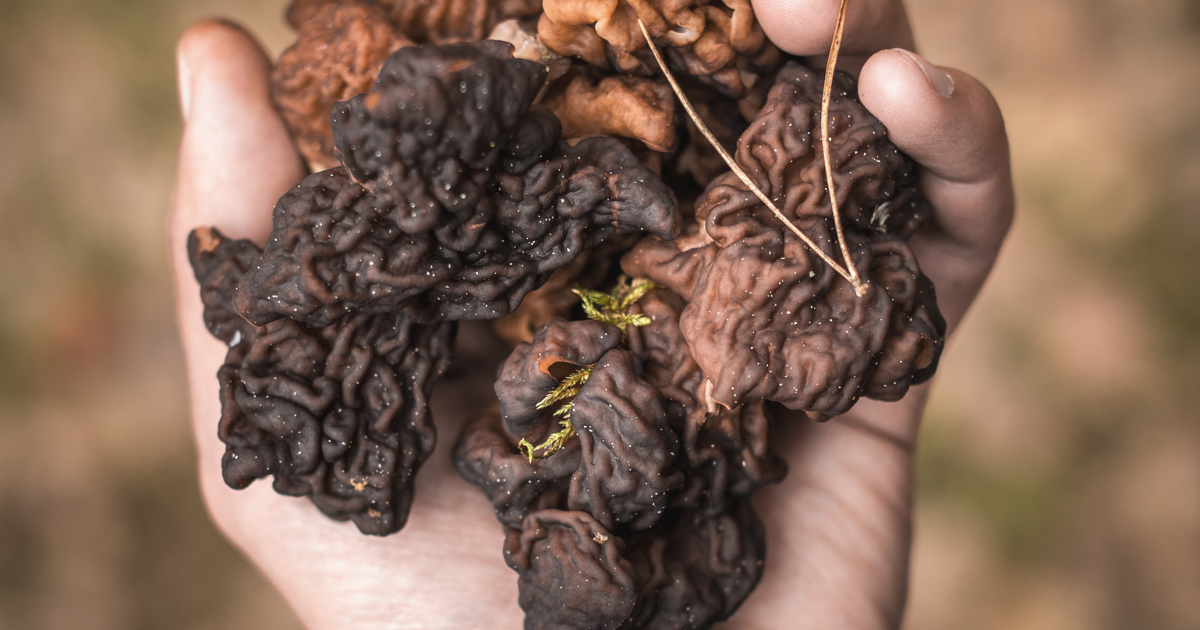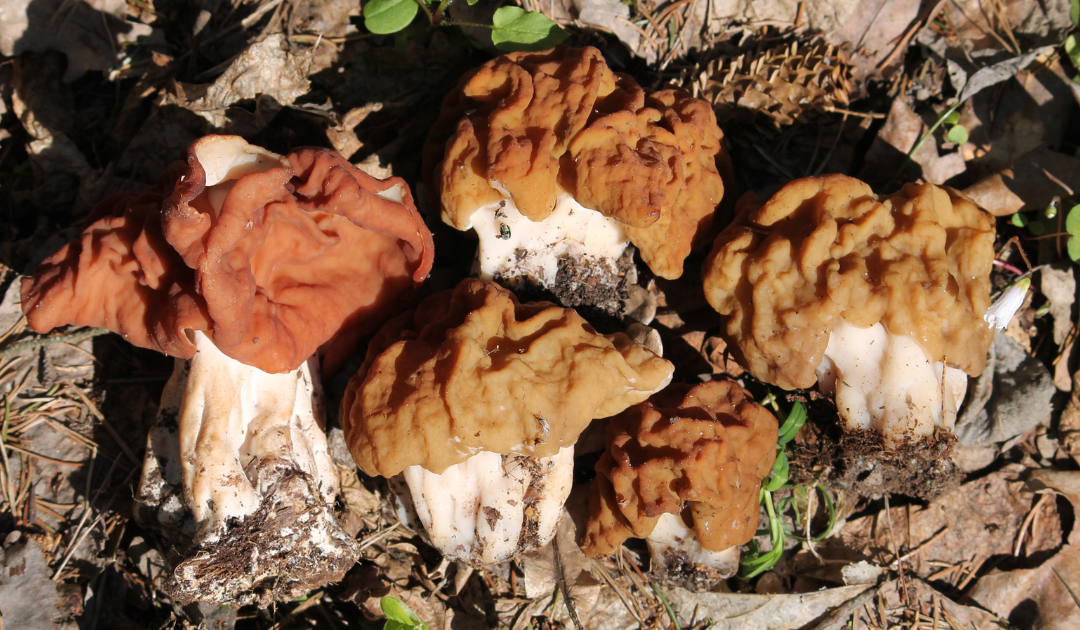Spring in the Midwest brings a sense of awakening—budding trees, thawed soil, and the irresistible call of the woods. For many foragers, this season marks the beginning of one of nature’s most exciting and elusive hunts: the search for morel mushrooms. Foragers truly treasure these honeycombed, golden delicacies, not only for their earthy flavor, but for the ritual and reward that comes with finding them. But as beloved as morel mushroom hunting is, it comes with a serious caveat: every forager should know how to tell the difference between morels and false morels, because the consequences of misidentifying them can be dangerous.
False morels, which resemble true morels at first glance, can pose serious health risks, including, in rare cases, long-term neurological consequences. While some communities have historically consumed these toxic lookalikes, research is now uncovering chilling correlations between false morel consumption and neurological conditions like ALS.
In this article, we’ll explore the risks of false morels, spotlight a cautionary case from a French village, and give you the tools you need to tell the difference. Because, in mushroom foraging, knowing what not to pick is just as important as knowing what to harvest.

Understanding False Morels and Associated Health Risks
What Are False Morels?
False morels are a group of mushrooms that bear a superficial resemblance to the highly sought-after true morels (Morchella species). Among the most notorious is Gyromitra esculenta, commonly known as the false morel.
These fungi are characterized by their wrinkled, brain-like caps, which can easily mislead foragers into mistaking them for edible varieties. Unlike true morels, which have a honeycomb-like appearance with pits and ridges, false morels have convoluted and irregular caps.
While some people have consumed false morels without immediate adverse effects, it’s very important to recognize that they contain toxic compounds that can pose significant health risks.
Health Risks of Consuming False Morels
Toxic Compounds:
False morels, particularly Gyromitra esculenta, contain a toxin known as gyromitrin. After ingestion, the body hydrolyzes gyromitrin into monomethylhydrazine (MMH), a highly toxic compound. MMH interferes with the central nervous system and can inhibit the function of vital enzymes, leading to a cascade of harmful effects.
Immediate Symptoms After Ingesting False Morels
The consumption of false morels can lead to a range of immediate health issues. Symptoms typically manifest within 6 to 12 hours after ingestion and may include:
- Gastrointestinal Distress: Nausea, vomiting, abdominal pain, and diarrhea.
- Neurological Symptoms: Dizziness, lethargy, tremors, and in severe cases, seizures.
- Other Effects: Headaches, muscle cramps, and fatigue.
In extreme cases, severe poisoning can result in liver failure, kidney damage, and hemolysis (destruction of red blood cells), which can be fatal if not promptly treated.
Long-Term Risks:
Beyond the immediate toxic effects, there is growing concern about the potential long-term neurological consequences of consuming false morels. Notably, studies have investigated a possible link between the ingestion of false morels and the development of amyotrophic lateral sclerosis (ALS). In a French village, health officials observed a cluster of ALS cases among individuals who had a history of consuming false morels. While causation has not been definitively established, these findings underscore the potential risks associated with these mushrooms.
Given these significant health concerns, it is critical for foragers to exercise caution and ensure accurate identification of mushrooms before consumption. When in doubt, it is safest to avoid consuming any mushroom that cannot be positively identified as edible.
Real-Life Examples: ALS in the Alps
In the quiet alpine village of Montchavin, France, home to just a few hundred residents, something alarming caught the attention of researchers: an unusually high number of ALS cases. Over several decades, health officials diagnosed 14 individuals from this small community with ALS, a rate significantly higher than expected for such a limited population.
When investigators began looking for common threads among the patients, one stood out: the regular consumption of false morel mushrooms, particularly Gyromitra esculenta. Villagers believed these mushrooms had rejuvenating, even medicinal properties. Despite known toxic risks, this community consumed the mushrooms with pride, passed down as part of local culinary tradition.
This cluster has raised serious questions about a potential link between false morel consumption and ALS development. While further research is needed to confirm causality, the Montchavin cases have become a public health warning. For the global mushroom foraging community, this serves as a sobering reminder: tradition does not equal safety, and the consequences of consuming toxic lookalikes can be both immediate and devastatingly long-term.

Why Knowing How to Tell the Difference Between Morels and False Morels Could Save Your Life
Morel mushroom hunting is one of spring’s greatest joys but it comes with serious risks when it involves toxic lookalikes. False morels, especially Gyromitra esculenta, are not just a minor mistake: they can cause seizures, organ failure, and may even be linked to the development of ALS.
The tragic case from Montchavin, France shows us what can happen when misinformation and tradition override caution. Fourteen individuals in a small village developed ALS, and many of them shared one thing in common: years of eating false morels. Their story is a powerful reminder that even seemingly “safe” practices passed down through generations can carry devastating consequences.
If you forage, educate yourself thoroughly. Study side-by-side comparisons. When in doubt, leave it out. And if you’re curious about exploring mushrooms on a deeper level, consider starting with a microscope instead of a skillet.
Check out our curated spore collection, a safe and educational way to study fungi and deepen your understanding of mushroom identification at the microscopic level.
Because in the world of wild mushrooms, knowledge isn’t just power—it’s protection.

